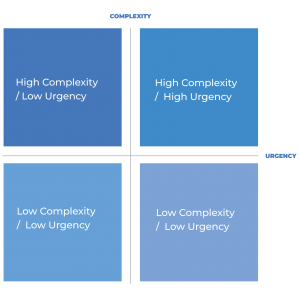While artificial intelligence (AI) is still evolving, its impact on customer service continues to grow. A virtual agent is one of the most popular AI-powered applications contact centres use today. Reduced agent workload, cut down operational costs and improved customer experience are just some of the reasons to implement a virtual agent in a contact centre environment.
Virtual agents are not a new thing, and over the years we have learned that the benefits of a digital agent far outweigh the disadvantages. We have also learned that to truly gain the rewards, a virtual agent needs some training and fine-tuning before it is ready for its first human interaction. Similar to its human peers. This article lists the top tips you need to know to successfully implement a virtual agent in a contact centre.
Chatbots vs. virtual agents, what’s the difference?
Chatbots and virtual agents may have the same purpose, but have different expectations around them. When a customer hears the word chatbot, the expectation is they can have a chat in the same way they would with a human. So a customer might start the conversation with something like “Hi, how are you? How’s the weather today?”. To which the chatbot/virtual agent replies “I’m sorry, I don’t know”. It is, of course, not programmed to know the weather. It is scripted to answer the most common business-related questions, relevant to the business it is serving. And to keep the conversation going in a way it meets the required purpose.
But the customer doesn’t know this. They’re left disappointed because they don’t get the experience they expected, despite it being the one that fits the purpose of their interaction. This is the reason we talk about virtual agents instead.
A virtual agent in a contact centre is also a salesperson
Virtual agents are really smart. They don’t exist only to answer questions but also to serve and engage the customer. That’s why you want a thought through AI strategy instead of a chatbot. The best way to start the process is to step into your customer’s shoes. Customer intent mapping helps understand the typical touch points along a customer’s journey. From there, it’s easy to pinpoint the stages AI can help at.
A customer journey begins with an intent to buy
Let’s imagine Pete who wants to buy a BMW 4 Series. He can buy it either from a car dealership or online. At a showroom, he is immediately greeted by a salesperson who is there to guide Pete along his journey. Pete’s experience should be no different on a website. If he can’t find the information he is looking for within a few clicks, he goes somewhere else. Imagine being at a car dealership and nobody comes to you. You wouldn’t hang around too long.
So, how to make sure a customer gets all the information they need online with a minimum effort? The star of the hour is your virtual agent. It takes the role of a salesperson to help Pete with his buying decision. While browsing, a text box prompts in the corner of Pete’s screen. “Hello, how can I help you? Looks like you are interested in the BMW 4 Series. You may like this arctic race blue”. The virtual agent can answer all his questions and use information from Pete’s browsing history to suggest relevant choices.
Not only are virtual agents great at engaging customers, but they are also brilliant at cross-selling. They can say “I see you have added this item to your shopping basket. We have a special promotion and if you buy two of them, you get a 25% discount”. The biggest advantage is that, for example, when a new sales campaign comes out, a virtual agent will automatically know all the details about it.
Use intelligence to direct customers between human and virtual agents
AI-powered solutions are increasingly common but it is unlikely for machines to replace an entire contact centre. Some customer enquiries will always require human touch. In an ideal scenario the operating system has the intelligence to direct enquiries between human and virtual agents based on complexity and urgency.

Low complexity queries
Virtual agents are perfectly equipped to handle the low complexity queries. A customer who wants to reorder printer toner cartridges can have a very straightforward conversation with a machine:
VA: Thank you for calling. Can I please have your account number?
Customer: 568843
[machine repeats the account number and customer details]
VA: Which colours would you like to order?
Customer: One magenta and one cyan
VA: Is that all for today?
Customer: Yes
VA: Thank you for calling. Your order is on the way
High complexity queries
High complexity enquiries, or emotionally loaded enquiries, should be directed to human agents. A situation like this could be a customer who cannot meet the payment deadline. Or a person who wants to close an account that belonged to a deceased loved one. Machines don’t have emotions nor flexibility to understand and handle these types of issues.
Use interactive voice response (IVR) at the beginning of the call to find out the reason for a call. “Hello, thank you for calling. How can I help you today?”. Then select the complexity and urgency before directing the customer to a human or a machine.
Don’t overlook the integration with your contact centre solution
With or without virtual agents, today’s customer wants to use their channel of choice when interacting with a company. As a result, contact centres have become omnichannel. In a true omnichannel environment every application and solution are seamlessly integrated.
Make sure to integrate AI applications with your contact centre solution to enable switching between channels and switching between agents and virtual agents. What you want to avoid is a situation where the customer needs to replay or say the same information over again. The information needs to flow from touch point A to touch point B, and so on.
At BrightCloud Group we design and deploy unique AI solutions that work in harmony with your business model. No matter if you are at early stages of your AI journey, or already on route and looking to add more intelligence, we can help. Contact our team today to chat more about AI in your contact centre.




